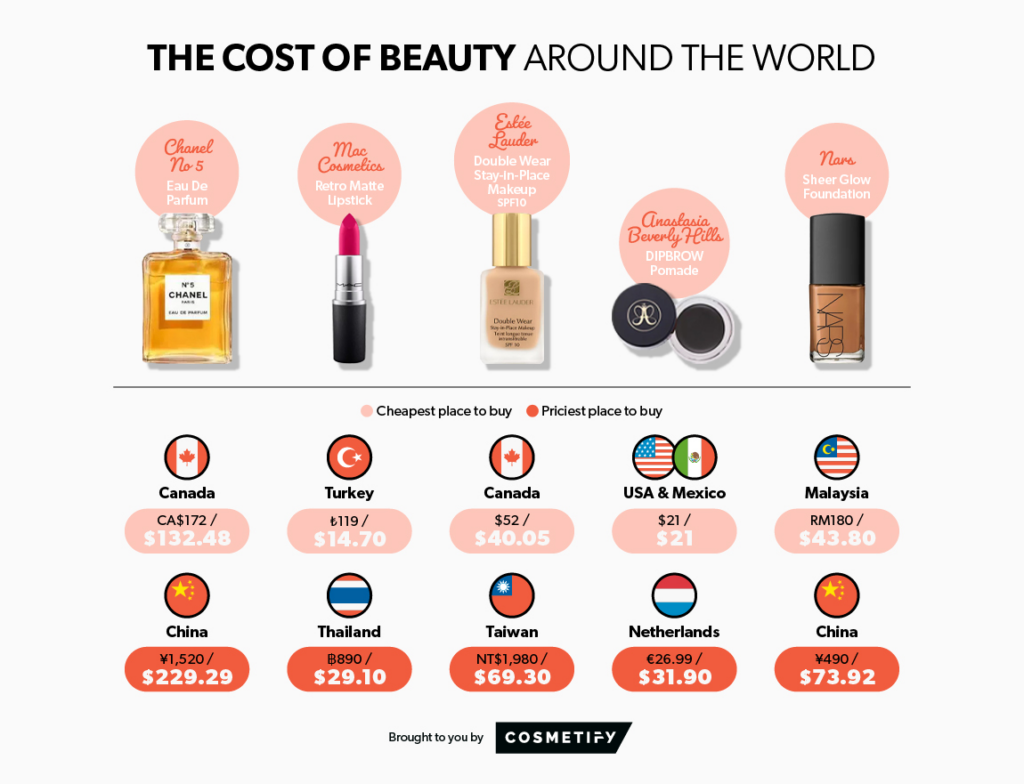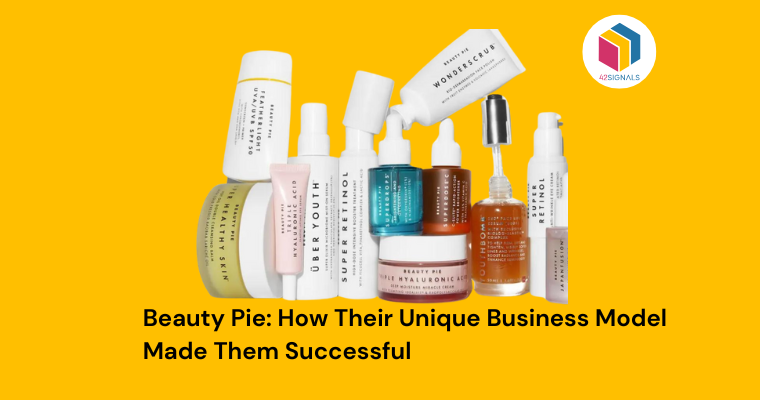In a saturated beauty industry where luxury brands command premium prices, Beauty Pie has emerged as a disruptive force by adopting an innovative approach that challenges the traditional beauty brand model.
Founded by Marcia Kilgore in 2016, Beauty Pie has steadily grown into a multi-million-dollar company with a loyal, ever-expanding customer base.
Its success lies not in glamorous marketing campaigns or celebrity endorsements but in a unique business model that offers luxury beauty products at a fraction of their traditional retail prices.
How Beauty Pie Revolutionized the Beauty Industry?
- The Traditional Beauty Industry Model
To fully appreciate Beauty Pie’s disruptive approach, it is essential to understand the traditional beauty industry model. Most luxury beauty products come with a significant markup—often as much as 10 to 12 times the manufacturing cost.
This price inflation is primarily driven by overhead costs such as expensive packaging, branding, retail markup, and high marketing expenditures, including celebrity endorsements and ad campaigns.

Image Source: Cosmetify
Luxury brands also invest heavily in exclusivity, with some items sold only in select high-end stores, making them status symbols as much as skincare or makeup solutions.
The high price tags create a barrier to entry for many consumers, especially those who crave luxury products but cannot afford to spend hundreds of dollars on a moisturizer or lipstick.
Here is where Beauty Pie saw a gap in the market—offering the same high-quality products minus the inflated costs.
- Beauty Pie’s Unique Business Model
Beauty Pie disrupts the traditional beauty industry by cutting out intermediaries and offering a direct-to-consumer (D2C) subscription-based service.

Image Source: Mind Over Margo
The core of Beauty Pie’s model is simple: offer luxury beauty products at factory cost to paying members, bypassing the markups that make premium beauty products so expensive.
Consumers pay a monthly or annual membership fee, which allows them to buy high-end beauty products at cost—without the inflated prices usually associated with high-end brands.
Key Features of the Business Model:
- Subscription Membership: Beauty Pie operates under a membership-based model, where customers pay a fee to access products at factory prices.
Membership fees range from $10 to $99 annually, and the higher the membership tier, the more the customer can purchase monthly.
This fee enables the company to maintain profitability without relying on traditional retail markups, which can go as high as 10x the production cost in conventional models.
- Direct-to-Consumer (D2C): Beauty Pie eliminates middlemen such as department stores, retailers, and distributors, which significantly reduces overhead costs.
By operating as a purely online brand, it avoids the expenses associated with physical retail stores, which traditional luxury brands typically pass onto consumers.
This direct relationship with the customer also allows Beauty Pie to gather real-time feedback and make adjustments to its product offerings swiftly.
- Factory Cost Pricing: One of Beauty Pie’s most attractive selling points is the transparency it provides into the pricing structure.
On its website, Beauty Pie lists both the factory cost and the typical retail price of each product if it were sold by a traditional luxury brand.

Image Source: Good Housekeeping
This gives customers a clear sense of the savings they are enjoying. Products such as high-quality moisturizers, foundations, and serums, which might retail for $80 or more, are available to members at their factory price—often as low as $15 or $20.
- Sourcing from Leading Labs: Beauty Pie sources its products from the same labs that manufacture for top luxury beauty brands.
The company’s founder, Marcia Kilgore, has built relationships with these manufacturers over decades in the beauty industry.
This means that Beauty Pie products are of the same quality as those sold by prestigious brands, without the exorbitant markups.
- Limited Marketing Spend: Unlike traditional luxury beauty brands that spend millions on advertising and celebrity endorsements, Beauty Pie relies on a more cost-effective, organic approach to marketing.
It invests in word-of-mouth, social media engagement, and influencer marketing, which provides more authentic connections with consumers. By doing so, the brand minimizes marketing costs while still building a devoted fanbase.
How Beauty Pie Delivers Luxury Without the Traditional Markups?
The cornerstone of Beauty Pie’s appeal lies in its value proposition: providing high-quality, luxury-grade beauty products at factory cost to its members.
The transparency in pricing resonates with consumers who have become increasingly wary of traditional retail markups. Beauty Pie promises that members get more value for their money, allowing them to spend on effective, premium skincare or makeup without breaking the bank.
By offering products at factory prices, Beauty Pie taps into the psychology of savvy shoppers who feel empowered by making smarter purchasing decisions.

Image Source: Ahoy Designs
They know that they’re not paying for packaging, branding, or celebrity endorsements—they’re paying for the product itself, which feels like a fairer transaction.
This model also aligns with a growing movement toward transparency and ethical consumption. Consumers today are more conscious of where their products come from and how they are priced.
Beauty Pie has captured this sentiment perfectly, enabling customers to feel both indulgent and responsible at the same time.
- Customer Engagement and Loyalty
Beauty Pie has cultivated a strong sense of community among its members, thanks in large part to its interactive, membership-based model.

Image Source: Coveteur
The brand actively engages with its customers on social media, frequently soliciting feedback on new products and launching member-exclusive offers. This ongoing interaction fosters a sense of loyalty and belonging among Beauty Pie members, who feel like they are part of an exclusive club that gives them access to premium products at lower prices.
Additionally, Beauty Pie’s membership tiers, which allow for varying spending caps based on the membership level, encourage customers to remain subscribed and to upgrade over time.
This tiered system, combined with the frequent release of new products, keeps members engaged and returning to the website regularly, thereby boosting customer retention.
- Competitive Landscape
While Beauty Pie has carved out a unique niche, it is not without competition. The beauty industry has seen an influx of D2C brands in recent years, particularly in the skincare and cosmetics sectors.
Brands like Glossier, The Ordinary, and Drunk Elephant offer high-quality products at relatively lower prices by also cutting out intermediaries. However, Beauty Pie’s subscription-based model sets it apart, providing access to a broader range of products at factory prices.

Image Source: The Irish Sun
Beauty Pie also differentiates itself by focusing heavily on luxury formulations and positioning itself as a purveyor of premium goods, unlike some of its competitors that focus on more affordable, no-frills products.
Beauty Pie members, therefore, feel like they’re getting the best of both worlds: luxury quality without the luxury price tag.
- Challenges and Criticisms
While Beauty Pie’s model has won over many, it’s not without its challenges. Some consumers are hesitant about the subscription model, preferring to purchase products on an as-needed basis without the commitment of a membership.
Additionally, because Beauty Pie is an online-only brand, customers cannot try products before they buy, which can be a barrier for those new to the brand.
The company has also faced criticism for its somewhat confusing pricing structure, where the factory cost is displayed alongside an inflated ‘typical’ retail price.
Some consumers have pointed out that the price comparisons seem arbitrary and that it’s difficult to ascertain the actual retail value of Beauty Pie products outside of the platform.
Nevertheless, these criticisms have not significantly impacted the brand’s growth trajectory, and Beauty Pie continues to refine its model based on customer feedback.
Conclusion
Beauty Pie has achieved remarkable success by challenging the traditional luxury beauty model. Through its innovative subscription-based business model, direct-to-consumer approach, and factory cost pricing, the brand has disrupted the beauty industry, offering consumers luxury-grade products at a fraction of the cost.
By capitalizing on the rising demand for transparency and value in the beauty sector, Beauty Pie has built a loyal customer base and a thriving community of beauty enthusiasts. As the brand continues to evolve and expand, its unique model is likely to remain a blueprint for the future of beauty retail, reshaping how consumers think about luxury in the digital age.
If you liked reading this article, check out our other brand articles –
- From Home Appliances to Beauty, How Dyson Has Diversified
- IKEA: How Their DIY Approach Changed the Furniture Game
- Prime Drinks: How Did They Become So Viral?
- Crumbl Cookies: How Listening to Customers Made Crumbl a Billion Dollar Revenue Generating Company
- Nestlé: The Story Behind One of the Biggest Consumer Goods Companies in the World







